[Educational Time Machine EP3] The Rise of Programming Education - S4A x World Cup
![[Educational Time Machine EP3] The Rise of Programming Education - S4A x World Cup](/content/images/size/w2000/2023/03/347375.jpg)
As technology advances, computers and electronic whiteboards are becoming more common on campus. This means that people need to learn programming and logical language in order to use these tools effectively in the digital age. As a result, there has been a global wave of programming learning.
Programming courses are now being offered in the United States, indicating that programming will become a fundamental skill for all students in the future. For those of you who are new to programming courses, you will likely become acquainted with Scratch, a widely recognized programming software featuring a memorable little cat.
"Scratch" is a program development platform created by the Massachusetts Institute of Technology that is user-friendly for people of all ages. Even if you have never learned a procedural language, you can still write programs by dragging and stacking pre-set building blocks of program code. Thanks to its simplicity and ease of use, Scratch has become a popular teaching tool in elementary schools in many countries.

Let's get our hands on Gigo's #1204R - S4A PROGRAMMING BLOCKS and make use of the "S4A" platform that is based on Scratch to develop a mini version of the World Cup. How about we compile it into a course?
◆Preparation (10 minutes)
1. First, we'll introduce the functions of the S4A software to the learners. We highly recommend installing and testing the software before class to ensure that all computers are functioning properly.
S4A stands for Scratch for Arduino, which is essentially a modified version of Scratch that integrates the functions of Arduino (a microcontroller board) through block dragging.

2. Let's gather all the necessary parts for the model, and don't forget to design the goalkeeper shape located in the lower right corner yourself.
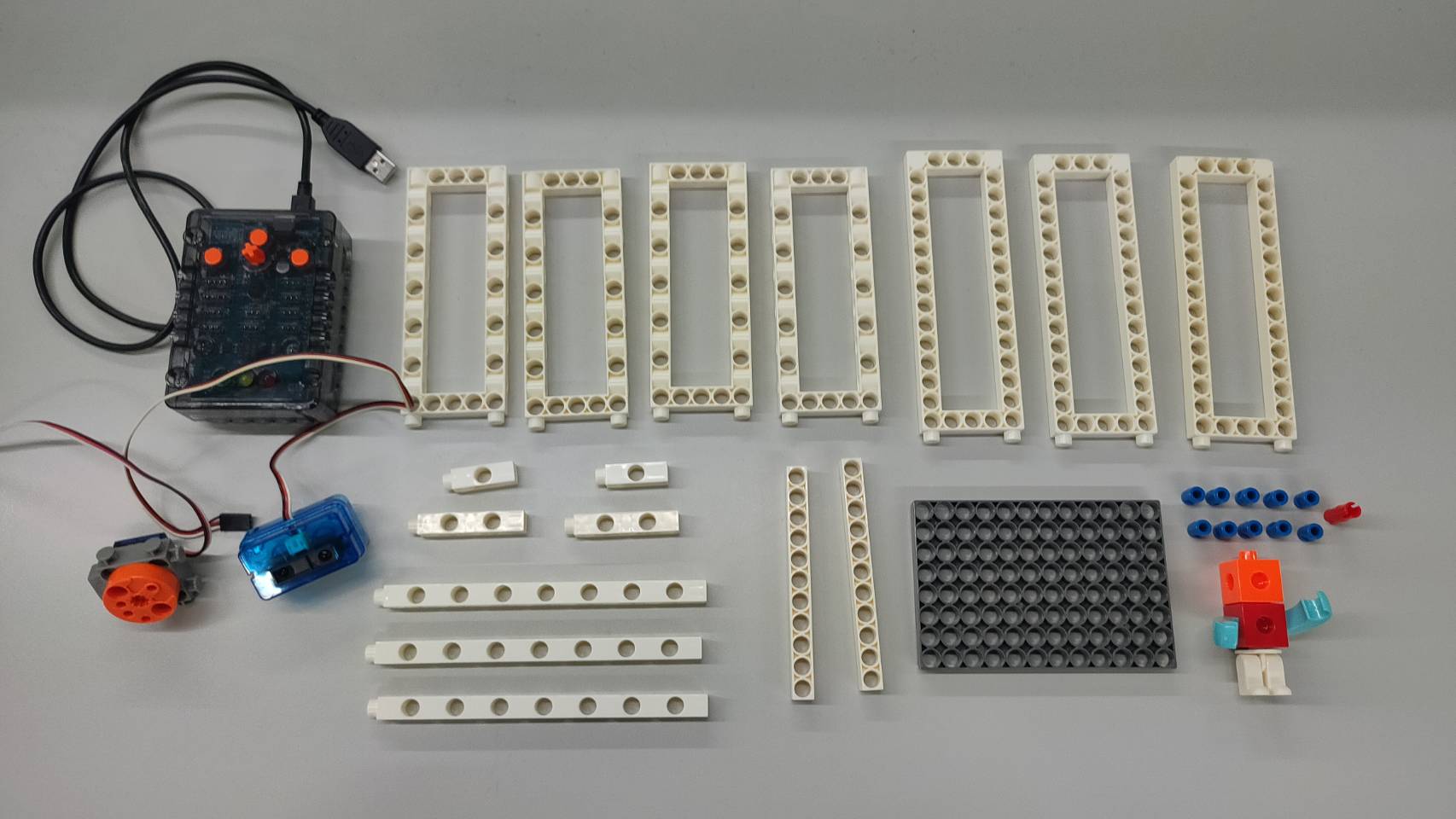
◆Demonstration of model making (20 minutes)
You can follow the assembly steps to build the model.
Step 1: Combine two C-5X15 FRAME and two C-5x13 DUAL FRAME as shown in the figure.
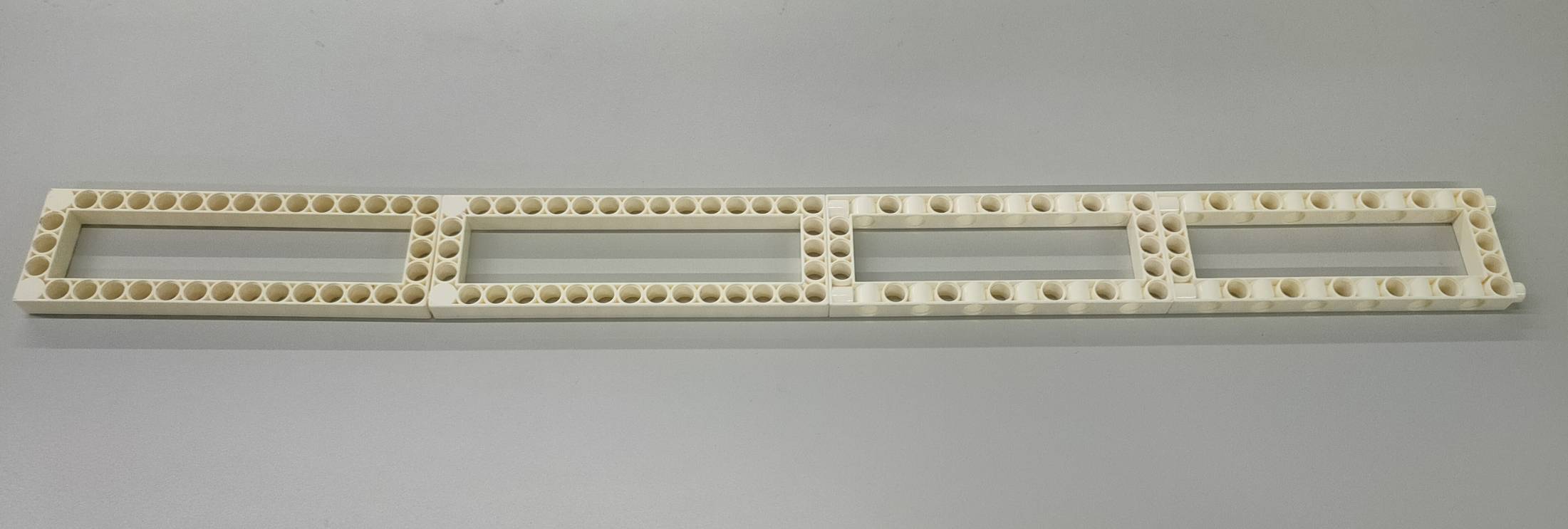
Step 2: Combine two C-3 HOLE DUAL ROD and one C-5 HOLE DUAL ROD, and place two B-SHORT PEG and two C-15 HOLE DUAL ROD as shown in the figure.
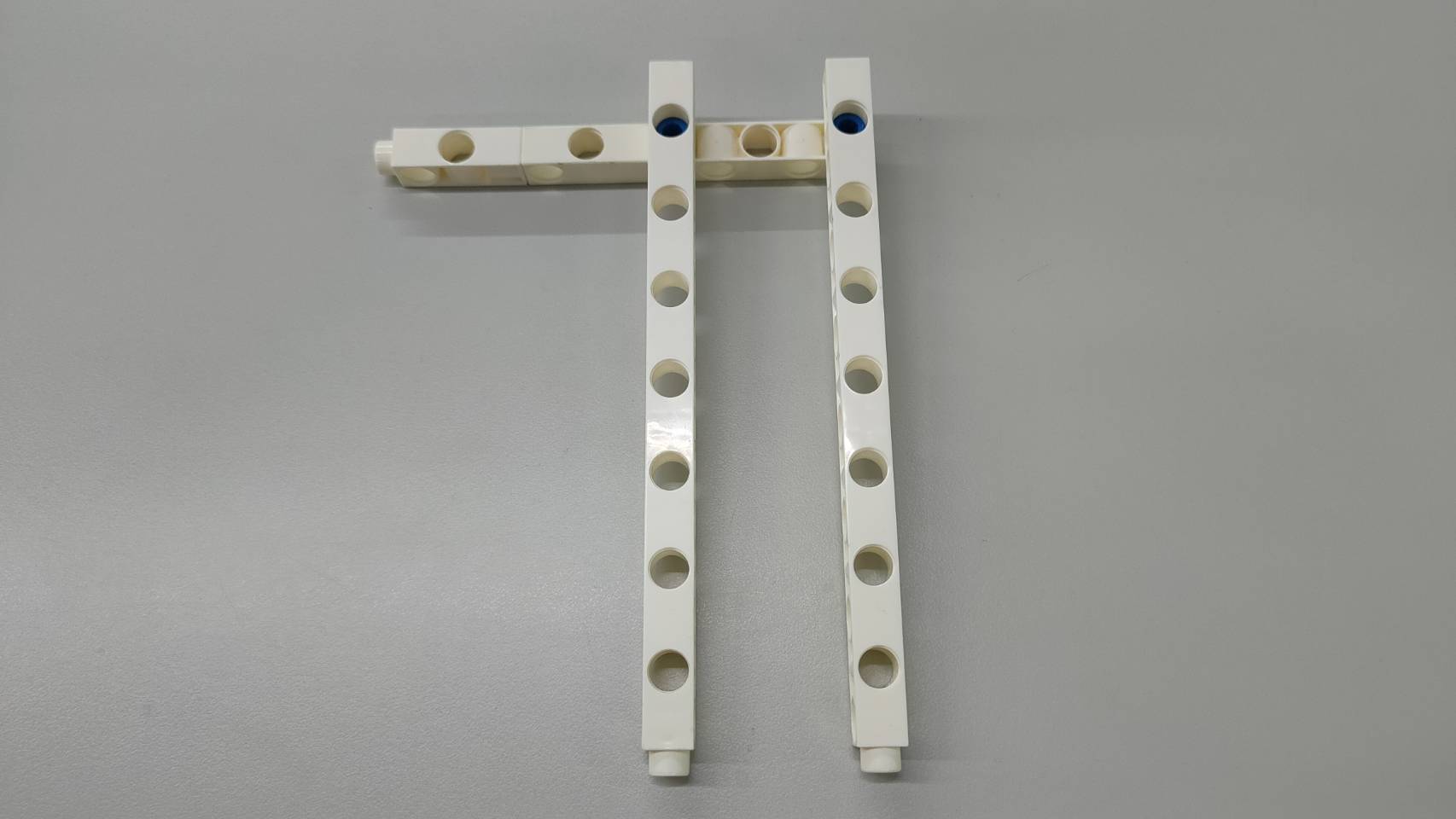
Step 3: Combine the part of step 1 and step 2 to make a shooting platform.
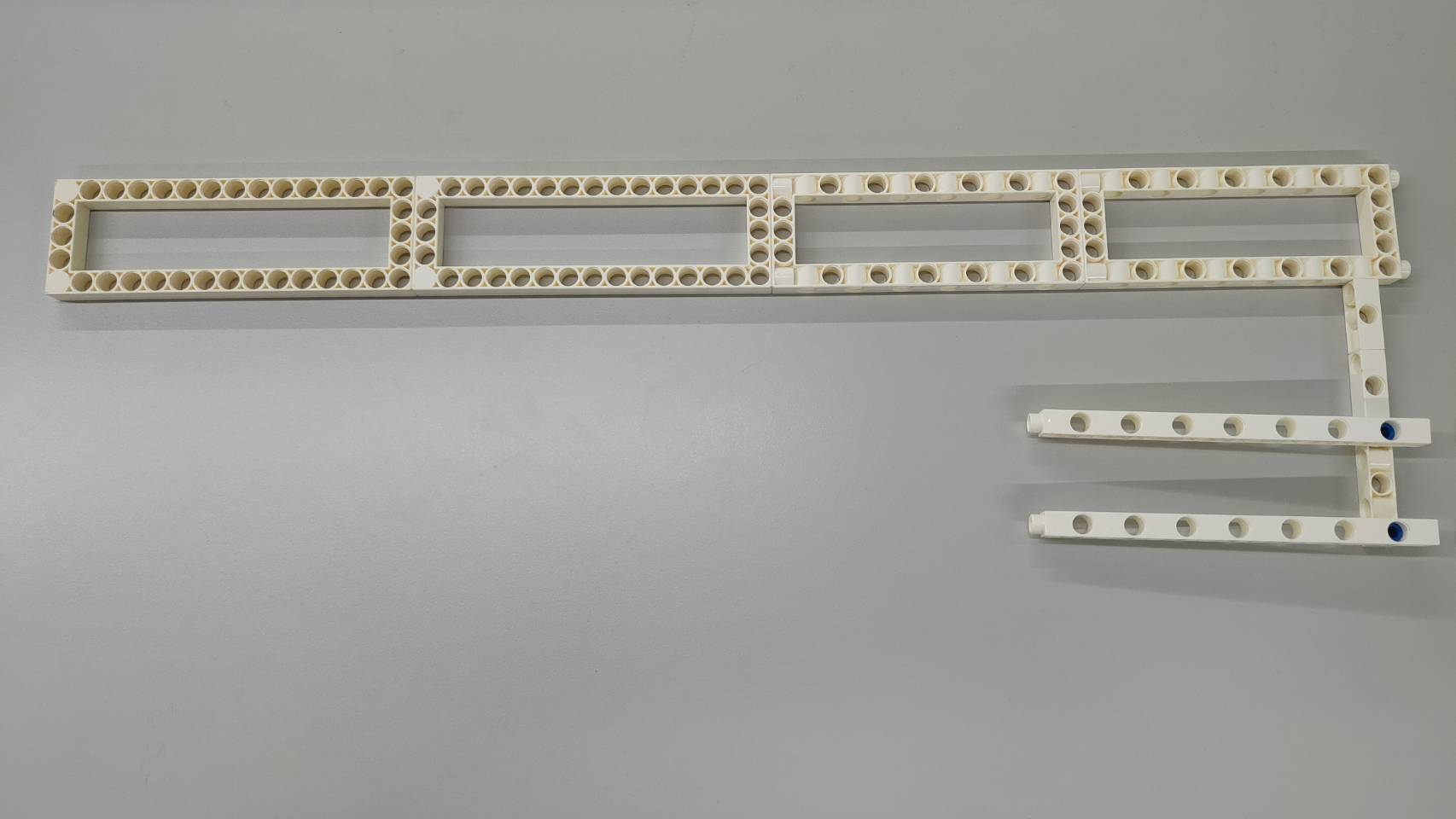
Step 4: Combine one C-5X15 FRAME, two C-5x13 DUAL FRAME and one C-15 HOLE DUAL ROD as shown in the figure.
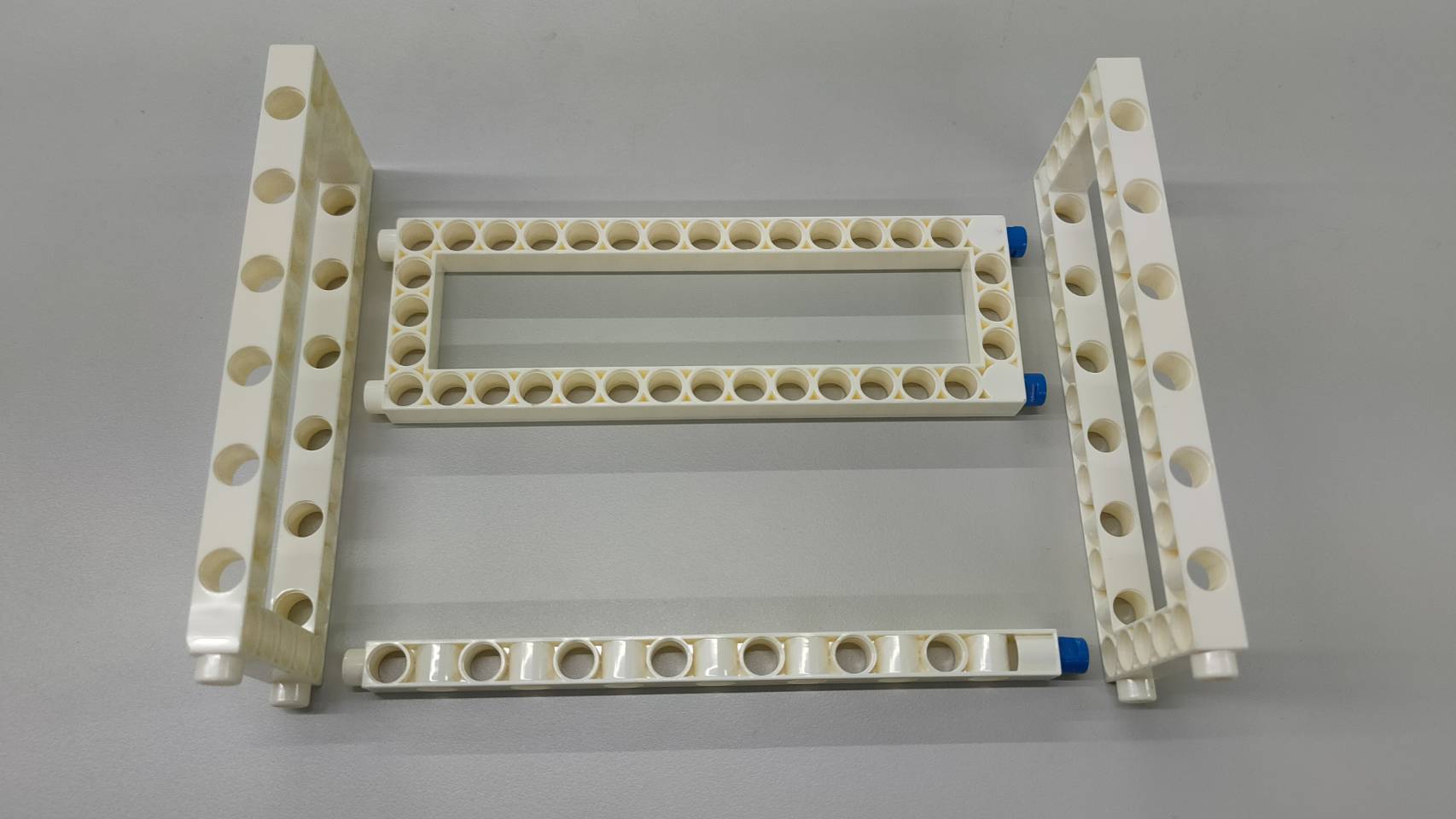
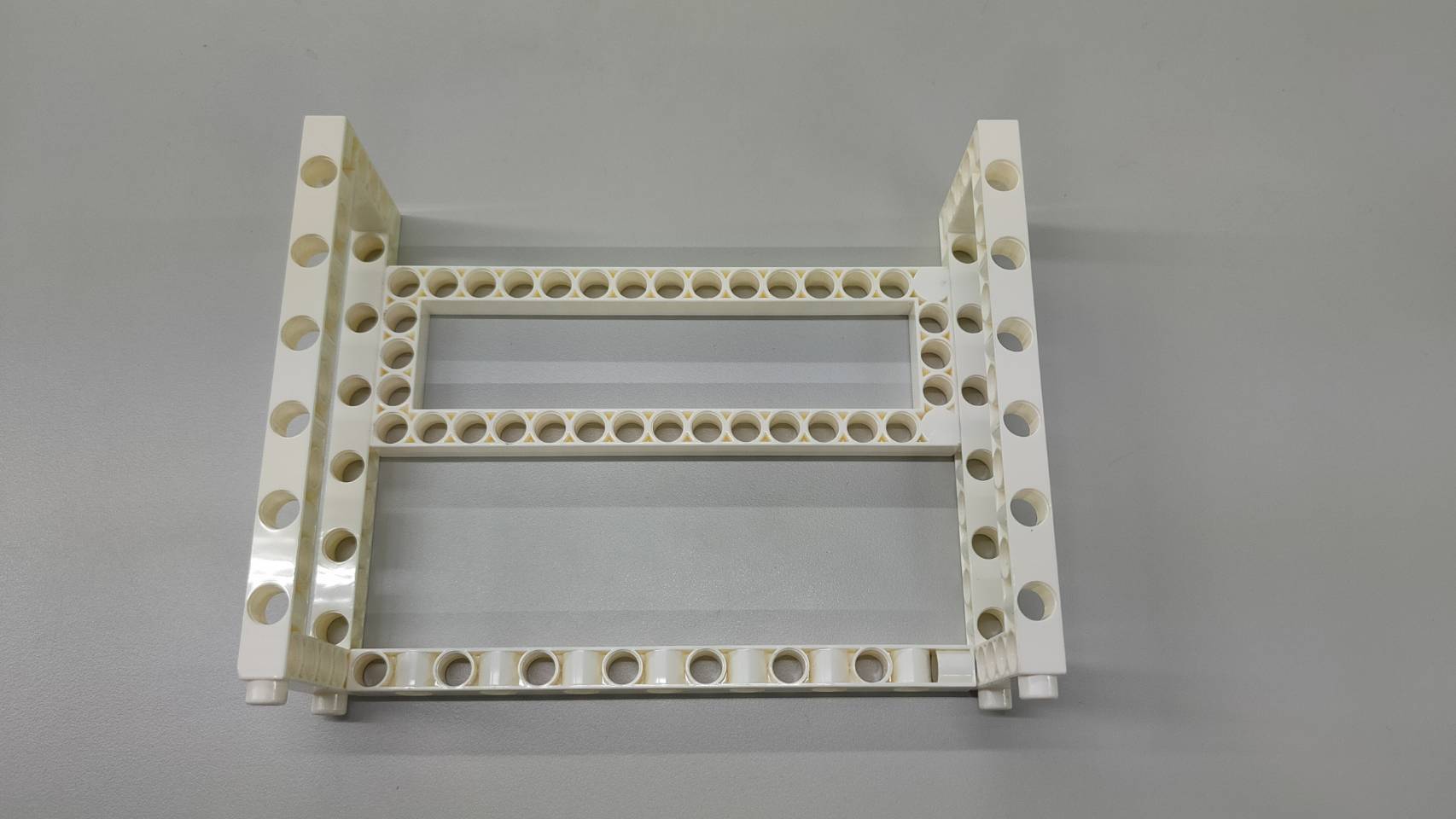
Step 5: Combine the part of step 3 and step 4 to make the goal posts.

Step 6: Combine the C-180° SERVO MOTOR and two C-11 HOLE ROD, and place the goalkeeper.
*Please use the C-AXLE CONNECTOR to connect the two C-11 HOLE ROD. The B-SHORT PEG is not suitable here.


Step 7: Place the goalkeeper onto the goal posts.
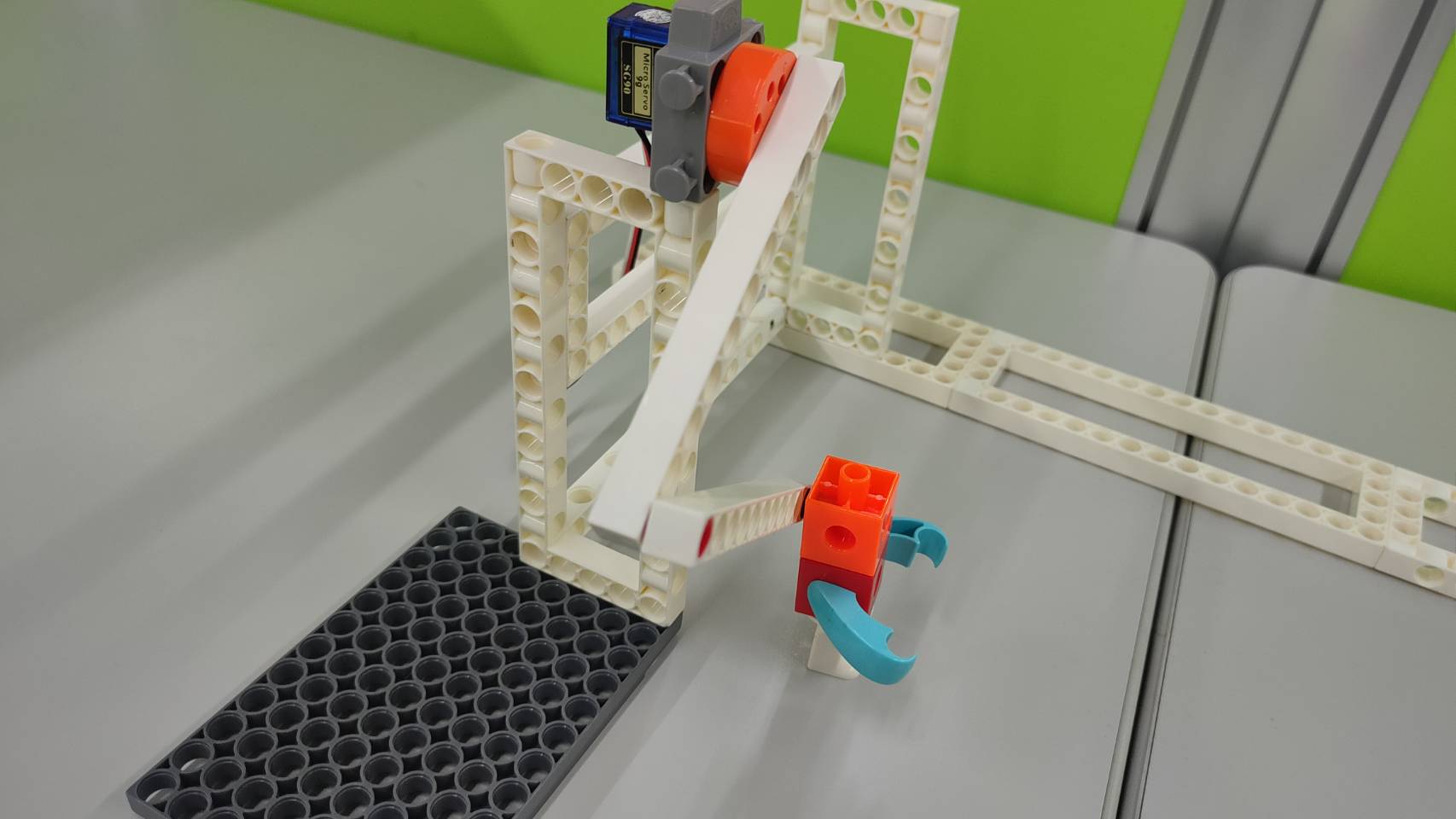
Step 8: Combine the C-IR SENSOR and C-5 HOLE ROD.
*Please use the C-IR SENSOR, not the C-ILLUMINANCE SENSOR.
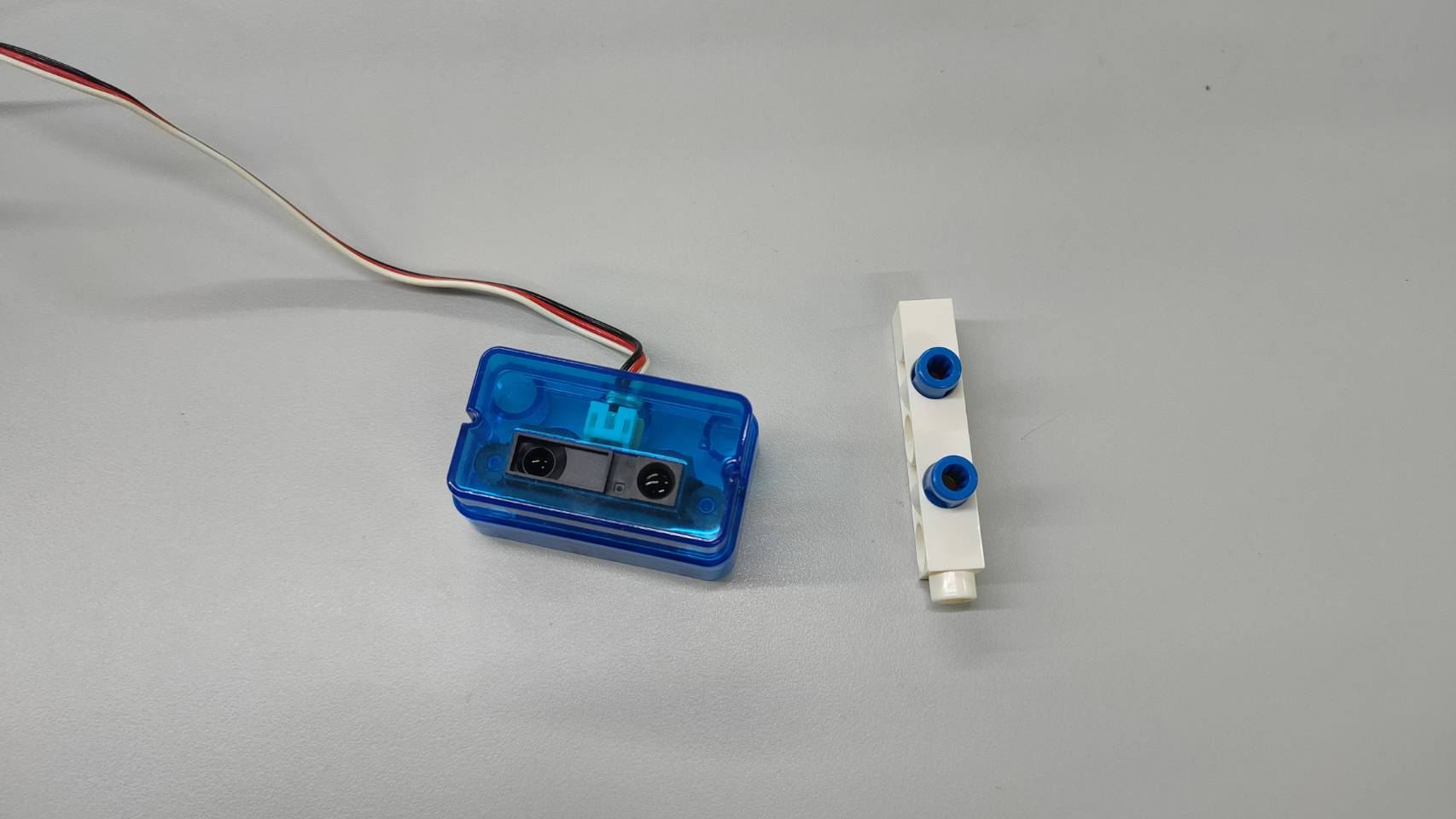

Step 9: Place the C-IR SENSOR in the long frame on the side of the front door, and its position will affect the reading time.
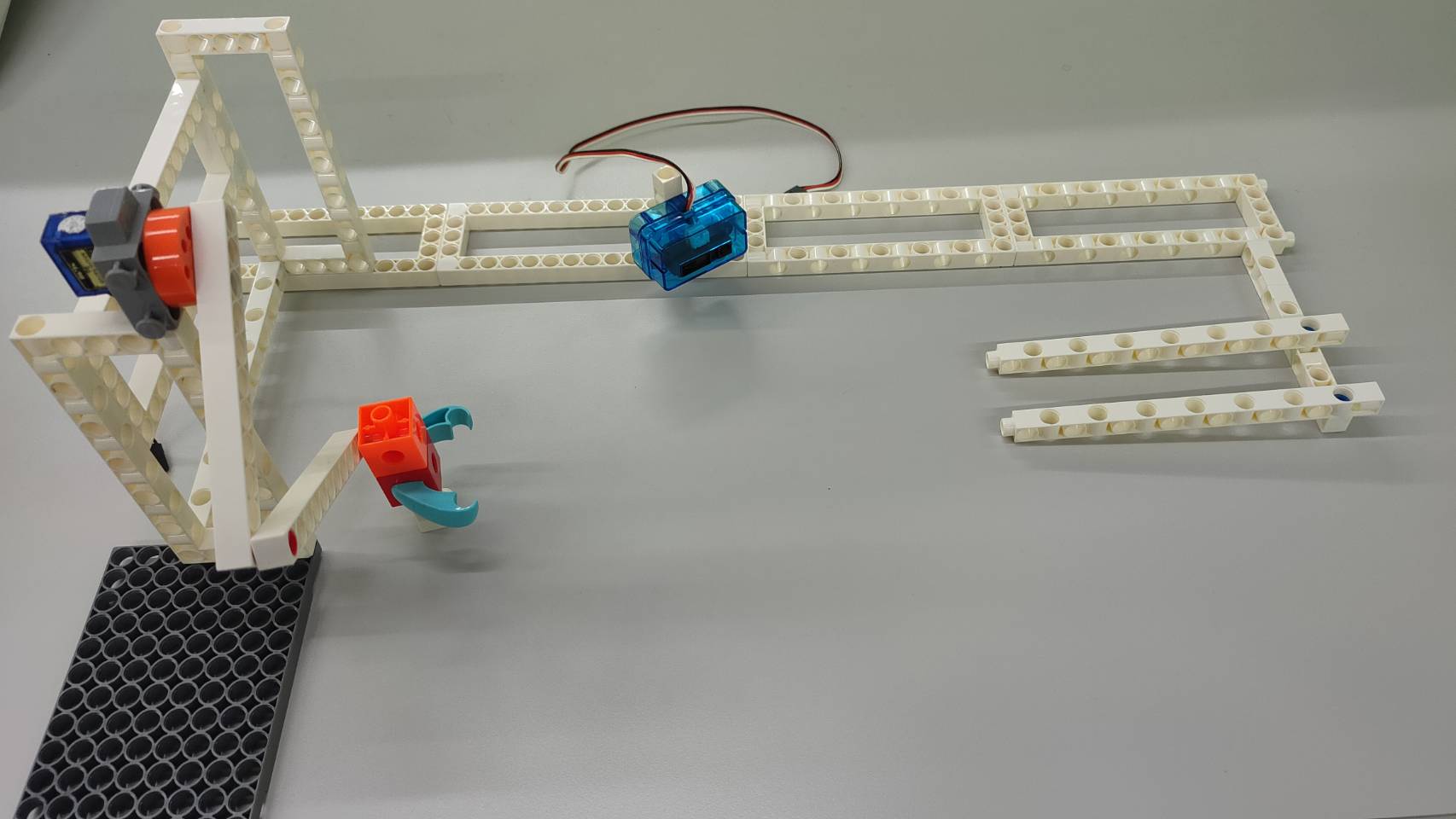
Step 10: Place the C-Gigo MAKER CONTROL BOX and connect the C-180° SERVO MOTOR to the port D8, connect the C-IR SENSOR to the port A4.
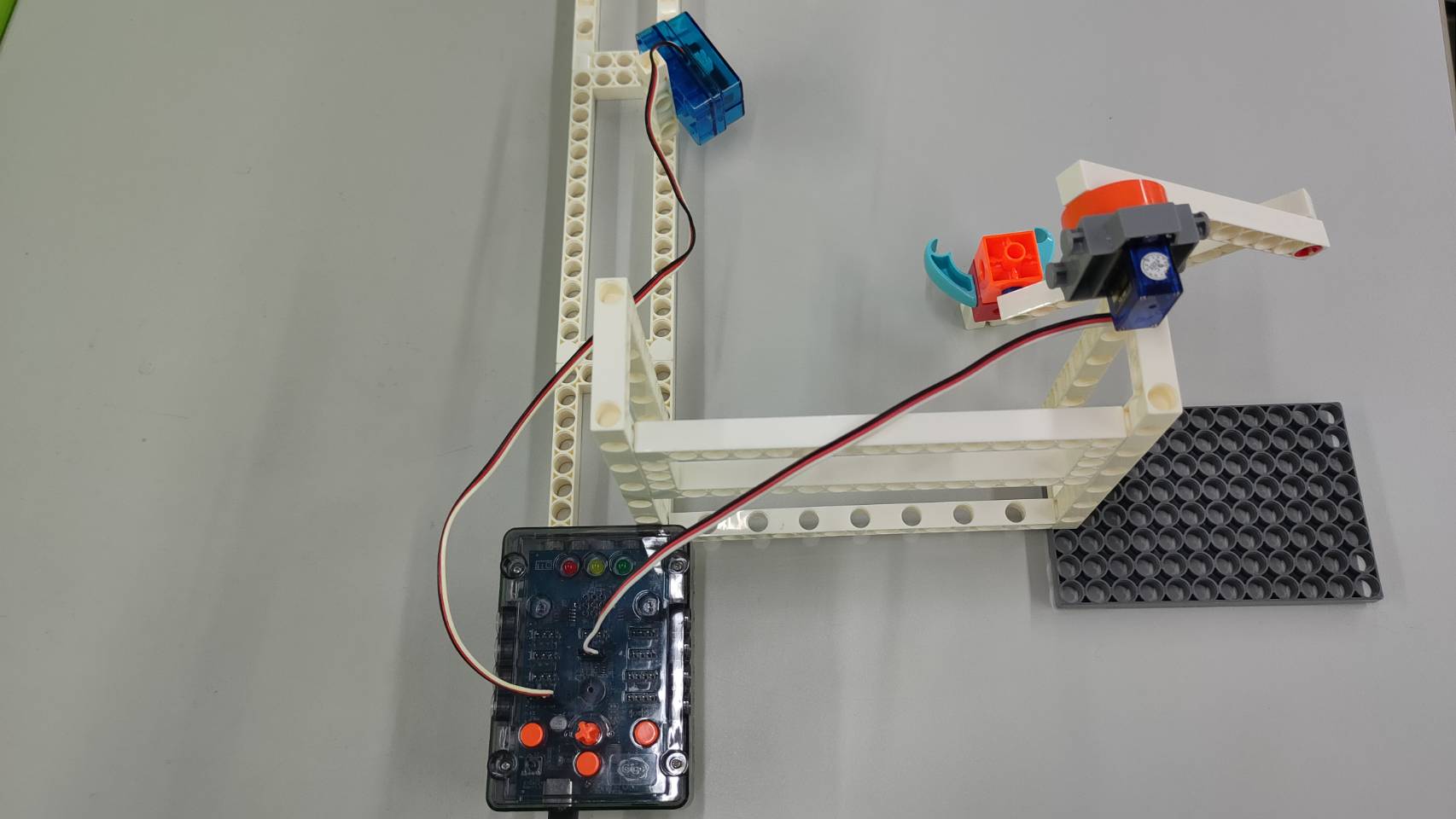

Step 11: Open the S4A software and write the program.
Program logic: When the IR sensor (Analog4) detects an approaching ball, the program will wait for 0.27 seconds and then turn the servo motor (motor8) 180 degrees to make the goalkeeper block the ball. The buffer time of 0.27 seconds is adjustable. If the ball speed is faster, the number of seconds can be reduced, and if it is slower, the number of seconds can be increased.
◆Production and Play (20 minutes)
1. The students assemble the World Cup model on their own while the teacher only provides assistance as needed
2. Once the students have finished assembling the model, they can play and keep track of how many goals they score out of 10. They are also allowed to modify the buffer time and adjust the goalkeeper's shape to increase the level of difficulty.
◆Summary and Tidy up (10 minutes)
1. At the end of the course, teachers can give a summary that includes an explanation of the linkage and infrared sensing principle used in the model. They can also go over some additional rules for soccer games, like the twelve-yard penalty kick.
2. Ask the students to take apart the models, sort the pieces, and put them back in their proper places. Remind them to use a peg remover to take the parts apart instead of forcing them.
◆Scientific Principles
This model employs two scientific principles, "linkage" and "infrared sensing."
Linkage involves connecting two or more levers to alter movement and direction and transfer mechanical energy. In this course, it is applied to the goalkeeper and the 180-degree servo motor.
Infrared sensing works by using the human body or objects to block infrared emissions, causing reflection, and triggering the infrared solenoid valve, which activates the desired action. Everyday examples of this principle include automatic flushers, sensor faucets, and hand dryers.
◆Postscript
Many people believe that programming is complex and challenging. However, there are numerous programming software options available today, each with user-friendly functions and interfaces designed for beginners. Through programming, we can develop valuable skills such as patience, the ability to communicate with computers, and logical thinking, which is a crucial "third language" in the digital age.
The educational time machine has now entered the realm of programming education, and we are excited for the next adventure ahead!
Keywords:
Coding Education, Scratch, S4A, Arduino, Linkage, Infrared Sensing, World Cup, Penalty Kick
Curriculum(NGSS):
3-PS2-1 Plan and conduct an investigation to provide evidence of the effects of balanced and unbalanced forces on the motion of an object.
3-5-ETS1-1 Define a simple design problem reflecting a need or a want that includes specified criteria for success and constraints on materials, time, or cost.
3-5-ETS1-2 Generate and compare multiple possible solutions to a problem based on how well each is likely to meet the criteria and constraints of the problem.
Please sign in to vote.
